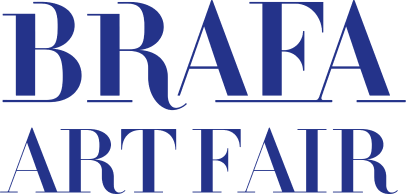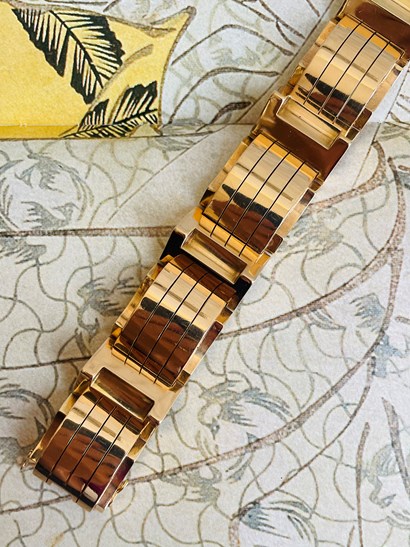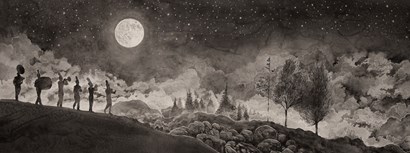This section will be available this Autumn.
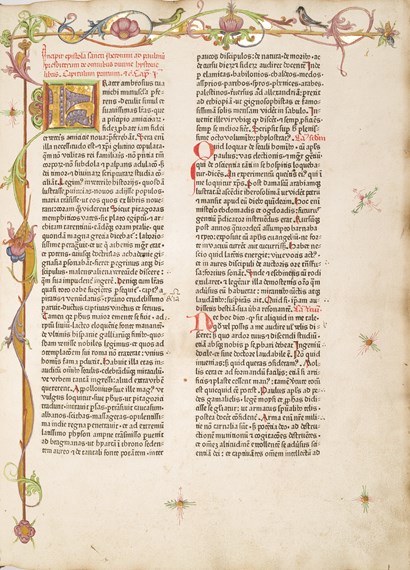
Chambre professionnelle belge de la Librairie Ancienne et Moderne (CLAM)
Heinrich Eggestein (Rosheim 1415/1420-1488) [Strassburg, not after 24 May 1466] […]. Biblia Latina 2 vols. Royal folio, with contemporary Augsburg binding Fifth edition of the Latin Bible and the first published by Heinrich Eggestein Librairie Lardanchet, Antiquarian bookseller
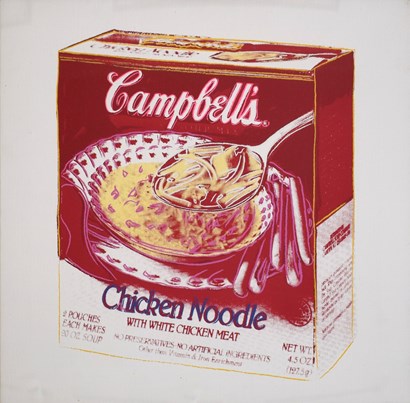
Gilden's Art Gallery
Andy Warhol (Pittsburgh 1928-1987 New York) Campbell's Chicken Noodle Soup Box, 1986 Acrylic and ink on canvas 50.8 x 50.8 cm Signed in felt tip pen 'Andy Warhol' and dated '86' [1986] on the upper canvas overlap, verso Stamped by the Andy Warhol Authentication Board and numbered in ballpoint pen A104.056, on the lower canvas overlap, verso Provenance: Michael Kohn Gallery, Los Angeles; private collection, Arizona; Van de Weghe Fine Art, New York; Demisch Danant, New York; private collection, Atlanta; Sotheby’s New York, May 13th, 2010, lot 191; private collection, Hong Kong; Christie’s Shanghai, September 21st, 2019, lot 310; private collection, Asia Literature: exh. cat. (1986), Warhol. Campbell’s Soup Boxes 1986, Michael Kohn Gallery, Los Angeles, reference n° 153, pp. 19, 30, ill. in colour
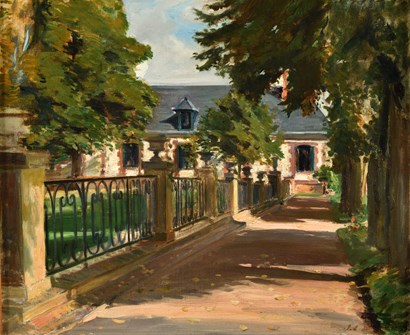
Galerie Alexis Bordes
jacques-emile blanche
Jacques-Emile Blanche (Paris 1861-1942 Offranville) View of a longère at the end of a tree-lined path, near Offranville Oil on canvas 38.3 x 46.2 cm Signed lower right: J E Blanche Certificate of authenticity by Mrs. Jane Roberts, a specialist on the artist Provenance: private collection, France Literature: Jane Roberts, Jacques-Émile Blanche, Paris: Gourcuff-Gradenigo, 2012; Mireille Bialek, Michel Ciry, Félicien Cacan, Jacques-Émile Blanche à Offranville: peintre-écrivain, Offranville: Mairie d’Offranville, 2006
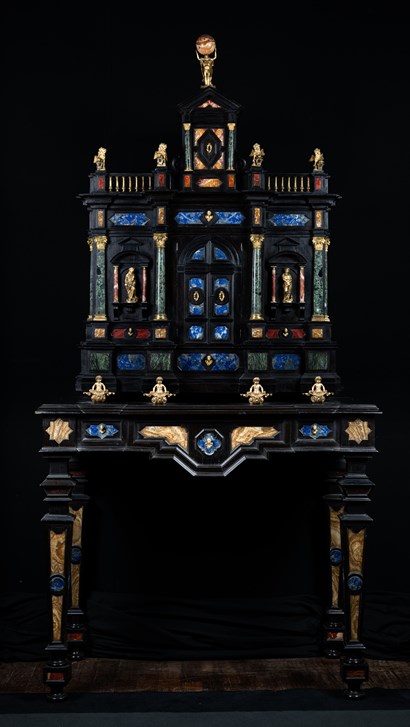
Carlucci Gallery
Roman Cabinat, circa 1780 Ebony veneered, marble and various polychrome stones H 208 x W 105 x D 62 cm Provenance: private collection Cabinet veneered in ebony, marble, and polychrome stones, with an architectural design. The upper section features a tympanum surmounted by Hercules holding the globe in flowering alabaster. A pierced balustrade is crowned with figures of a winged lion bearing a heraldic shield. The façade is articulated with a central door and two lateral doors, each concealing interior disappearing drawers. Materials include jasper, lapis lazuli, breccia, alabaster, and antique green marble.
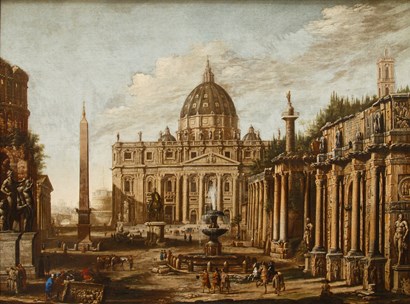
Ars Antiqua
viviano codazzi and jan miel
Viviano Codazzi (Italy, Bergamo 1604-1670 Rome) and Jan Miel (Belgium, Beveren 1599-1663 Turin, Italy) Architectural Capriccio with a View of Saint Peter's Basilica and Classical Antiquities First half of the 17th century Oil on canvas 149 x 200 cm Authenticated by Professor Alessandro Agresti
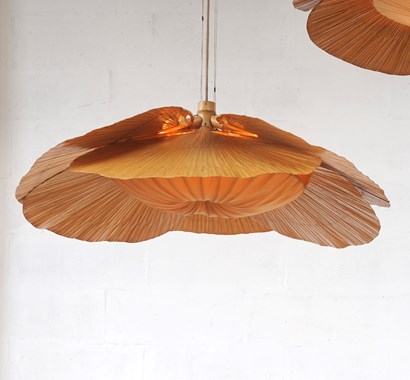
Maisonjaune Studio
ingo maurer
Ingo Maurer (Germany, 1932-2019) Hana Chandelier (Uchiwa collection), 1970s Bamboo, Japanese paper Provenance: Japan The Hana chandelier belongs to Ingo Maurer’s Uchiwa collection, created in the 1970s. Handmade in Japan from bamboo and Japanese paper fans, it radiates lightness and poetry. Its sculptural presence blends tradition with refined modernity. Exceptionally rare today, it stands as one of Maurer’s most iconic creations.

Franck Anelli Fine Art
claude corneille de lyon
Claude Corneille de Lyon (The Netherlands, The Hague 1500-1575 Lyon, France) Portrait of a wealthy merchant wearing a fur-lined coat and gold chain, circa 1560 Oil on panel 15 x 18 cm Certificate from Dr. Alexandra Zvereva This painting will be included in the supplement to the artist's forthcoming Catalogue Raisonné This unpublished small portrait fits naturally into the later works of one of the most illustrious portraitists of the French Renaissance. Referred to in contemporary documents by the name of his hometown, La Haye, he later became known simply as 'Corneille' until André Félibien, who believed him to be from the banks of the Rhône, added the name 'Lyon' in the index of his Entretiens. Born and trained in the Netherlands, probably in Flanders, the artist settled in Lyon as early as 1533. There, he succeeded Jean Perréal, the portraitist of Charles VIII and Louis XII, renowned for his intimate portraits with coloured backgrounds. By the mid-1530s, Corneille had gained such fame that he found himself painting the courtiers accompanying the king to Lyon, as well as the Sons and Daughters of France. However, unlike Perréal, his career was not that of a royal artist following the court. He never left Lyon, and his titles of "painter to the Dauphin" and later "painter and ordinary valet to the king" were purely honorary, primarily granting him the privileges of royal officers. The prominent citizens of Lyon, wealthy French and foreign merchants, high-ranking royal officers, well-to-do bourgeois, and magistrates made up the bulk of his clientele. Corneille created small-scale portraits for them, painted in just a few sitting sessions directly onto panels. Intended for family and close associates, these works had no official circulation and existed in only one unique copy, unlike portraits of the nobility, of which Corneille often made replicas that were widely circulated. The subject of this portrait is not a nobleman, despite his evident wealth. His attire is simple, a dark brown-black without any ornamentation, slashing, or jewels. The white ruff of his shirt is not starched. His high cap, fashionable in the 1550s-1560s, lacks a plume, a privilege reserved for the nobility, as it was associated with the feathers adorning knights' helmets. However, the man does possess a certain fortune, as evidenced by his fur-lined cloak of marten with wide lapels and a large gold chain with three rows of links, favoured by the Flemish. The medallion on the chain is cropped by the frame. This is almost certainly a prosperous merchant, eager to demonstrate his success and preserve the memory of his features for his family. The absence of any inscription on the reverse, giving the name of the subject, makes identification impossible, since no replica or engraving exists. Despite previous restorations, particularly to the face and background, the distinctive characteristics of Corneille’s art are clearly visible here, such as the rough sketching of the ear, the sloping shoulders that make the head appear slightly disproportionate to the torso, the treatment of the hair with individual strands, the brilliant irises crossed by an oblique ray of light, and the broader brushstrokes in the clothing.
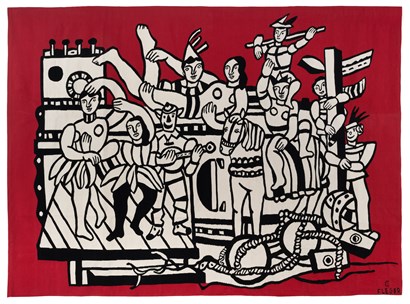
Galerie Hadjer
fernand léger
Fernand Léger (Argantan 1881-1955 Gif-sur-Yevette) (after) & Yvette Cauquil-Prince (Belgium, Dampremy 1928-2005 Tresques, France) La parade sur fond rouge Created in 1975 Wool 280 x 400 cm Woven by Yvette Cauquil-Prince in Paris (pictogram lower right) Tapestry number 1/1 - Unique Piece Provenance: Yvette Cauquil-Prince; Paul Haim collection; private collection, USA Literature: Masters of the 20th century, KunstHausWien Exhibition: KunstHausWien, 10 February-14 May 2000, Vienna

Galerie Alexis Pentcheff
maurice utrillo
Maurice Utrillo (Paris 1883-1955 Dax) Belle Gabrielle, Montmartre, circa 1912-1914 Oil and gesso on cardboard mounted on panel, signed lower right 41 x 55.5 cm Provenance: London, Christie’s sale, 23 June 2004, lot n° 267; European private collection; Galerie Alexis Pentcheff; private collection, France Literature: Jean Fabris and Cédric Paillier, L’œuvre complet de Maurice Utrillo, Paris, 2009, repr. n° 332, p. 396; Maurice Utrillo, exhibition catalogue, Tokyo, Seiji Togo Memorial Sompo Japan Museum of Art, 2010, n° 1, p. 142 (ill. in colour in the section 'Works reproduced as archives') Exhibitions: Centenary of the Birth of Maurice Utrillo, Musée Jacquemart-André, Paris, May-August 1983, n° 13 (travelling exhibition to Liège, Musée Saint-Georges, and to Lille, Fondation Septentrion in Marcq-en-Barœul, until 15 January 1984); Maurice Utrillo, Tokyo, then Osaka, Kyoto, and Yamaguchi, Japan, 1 November 1985-5 May 1986, n° 17 (ill. cat. in colour); Maurice Utrillo: Solitude Urbaine, Galerie Alexis Pentcheff, Marseille, 22 September-4 November 2017, n° 3 (ill. cat. in colour)
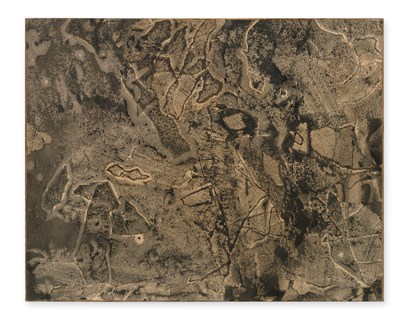
Repetto Gallery
jean dubuffet
Jean Dubuffet (Le Havre 1901-1985 Paris) Topographie, January 1959 Oil on paper collage applied on paper [assemblage d’empreintes (huile noire)] 47 x 59 cm Certificate of authenticity by Galerie de l’Ile-de-France, Paris Provenance: Galerie de l’Ile-de-France, Paris; private collection, Italy Literature: Max Loreau (Ed.), Catalogue des travaux de Jean Dubuffet. Fascicule XIX : Célébration du sol II, texturologies, topographies, Weber éditeur, Paris, n° 173

Galerie Cento Anni
andré lanskoy
André Lanskoy (Moscow 1903-1976 Paris) Un cas suspect, 1964 Oil on canvas 97 x 146 cm Signed and dated 'Lanskoy 64' Provenance: Galerie de Seine; private collection, Paris Certificate of authenticity from the Comité Lanskoy dated 4 April 2025 This work will be included in the forthcoming catalogue raisonné currently in preparation
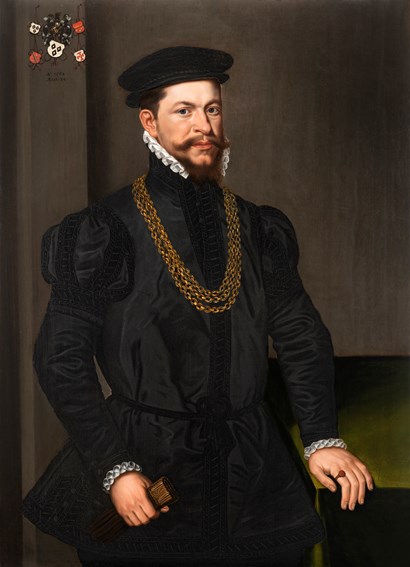
Galerie Lowet de Wotrenge
frans pourbus the elder (bruges 1545/46 - 1581 antwerp)
Frans Pourbus the Elder (Bruges 1545-1581 Antwerp) Portrait of Peeter van Panhuys, alderman and treasurer of Antwerp, 1562 Oil on oak panel 105 x 75 cm Dated upper left 'A°. 1562' and inscribed below the date ‘Aetat: 34’ Provenance: private collection, Belgium Literature: R. Willmott, Antwerp and the Golden Age: Culture, Conflict and Commerce, Unicorn, 2025 (ill.) In an era when wealth and power increasingly resided not in hereditary titles but in commerce and banking, Frans I Pourbus captured the self-assured gaze of the new elite. This striking portrait depicts Peeter van Panhuys - merchant, banker's agent, and future treasurer of Antwerp - at a pivotal moment in his rise through one of Europe's most dynamic commercial centers. The work's contemporary resonance is unmistakable. Van Panhuys embodies the entrepreneurial spirit that still defines global finance, yet his story also reflects our modern anxieties: barely two decades after this portrait was painted, religious conflict forced him to flee Antwerp as a refugee, abandoning everything he had built. His biography encapsulates the precariousness of prosperity in times of social upheaval - a theme that speaks powerfully to today's world of political instability and forced migration. Pourbus renders his subject with remarkable psychological acuity. The prominent gold chain and exquisitely detailed black doublet announce van Panhuys' status, while the crisp white ruff - painted with virtuosic precision - frames a face of penetrating intelligence. In his left hand, he holds a pair of gloves, a refined accessory that signals his gentlemanly aspirations and membership in Antwerp's sophisticated mercantile elite. Recently rediscovered from a Belgian private collection, the sitter's identity is confirmed through his appearance in Maerten de Vos's monumental family portrait at the Mauritshuis, where van Panhuys stands among the interconnected dynasties that dominated Antwerp's Golden Age. This painting invites us to reconsider the origins of our modern world - built not by kings and generals, but by ambitious merchants whose portraits demanded the same dignity once reserved for nobility.
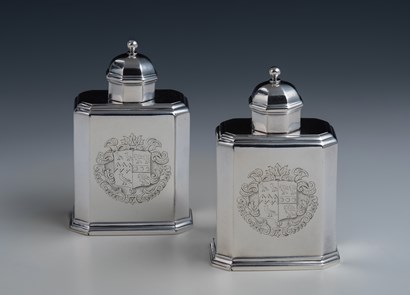
Kunsthaus Kende
Pair of George I Britannia silver tea caddies John Farnell, London, 1720 Engraved sterling silver H 12.5 cm 240.3 g and 237.4 g Provenance: private collection, North America The smooth, octagonal body merging into the correspondingly smooth shoulder. The lid finished with a twisted baluster. The base, which can be pulled out for filling, is only marked with a maker’s mark, the lid is unmarked. The bodies are hallmarked on the underside of the back. The contemporary coat of arms engraved on the front commemorates the marriage of a gentleman of the Dove family (who were based in East Burgholt in the county of Suffolk) and a lady of the Pierse family (whose family was based in Alston in the county of Warwickshire). An attractively preserved, early Britannia silver pair of tea caddies with a beautifully preserved, original surface.

Galerie BA - Berthet Aittouarès
henri michaux
Henri Michaux (Namur 1899-1984 Paris) Untitled, 1964 Ink on paper 75 x 105 cm Monogrammed on the lower right This work is registered in the Henri Michaux archives under the number HM5891 Provenance: Galerie Daniel Cordier, Paris; private collection, France Exhibition: Henri Michaux, Musée national d'Art Moderne, Paris, 1965
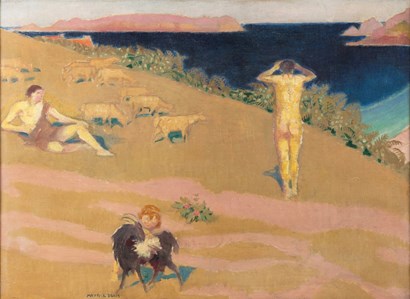
Galerie Taménaga
Maurice Denis (Granville 1870-1943 Paris) Les Bergers, à la chèvre noire, circa 1918 Oil on canvas 45.2 x 62.2 cm Signed lower left 'Maurice Denis' Provenance: Lang; Galerie Druet; Hirschler; private collection Literature: Paris, Galerie Druet, Exposition Maurice Denis, 1918, n° 27; Ploëzal, Château de la Roche-Jagu, Maurice Denis et la Bretagne. Les étés de Silencio, 2009, n° 59, repr. p. 157
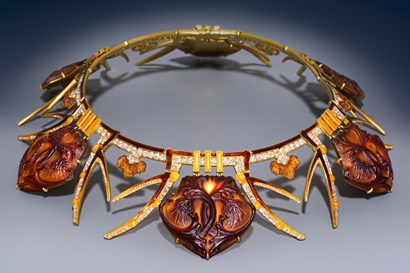
Epoque Fine Jewels
rené lalique
René Lalique (Ay 1860-1945 Paris) Art Nouveau thistle necklace Paris, circa 1905 Gold, diamond, enamel and glass Signed: Lalique The piece is housed in its original case, marked ‘Lalique, Place Vendôme 24, Paris’ Provenance: private collection, France An impressive Art Nouveau gold, diamond, enamel and glass thistle flower necklace by René Lalique, consisting of six pentagonal plaques made from moulded amber-coloured glass, each adorned with two intertwined thistle flowers facing outward, topped by three yellow enamel rods. Flanking the plaques are long curved thorns, set with diamonds and accented with yellow and brown enamel. Between the thorns are small thistle flower motifs in moulded orange glass, enhanced with diamonds. This exceptional Art Nouveau choker necklace by René Lalique (circa 1905, Paris) exemplifies his revolutionary use of glass in fine jewelry. The piece features six molded amber glass plaques decorated with intertwined thistle flowers, enhanced by diamonds and yellow and brown enamel on gold. The thistle flower motif, emblem of Lorraine and the Dukes of Lorraine, symbolizes courage and protection, reflecting the regional heritage of Nancy, where the original owner was a notable social figure likely to have commissioned it directly from Lalique. Created during the period when Lalique moved his shop to 24 Place Vendôme, the necklace illustrates his transition from Art Nouveau to early Art Deco, blending naturalistic design with modern aesthetics. Its autumnal hues, sunlit enamel details, and radiant diamonds evoke both poetic beauty and symbolic depth. Lalique drew inspiration from wild flora rather than cultivated blooms, favoring authenticity and imperfection as expressions of nature’s truth. This necklace, long preserved in a French private collection and once known only through drawings (including one published by Sigrid Barten), is a rare surviving example of Lalique’s innovation. It demonstrates his mastery in merging craftsmanship, symbolism, and modernity, affirming his reputation as the “inventor of modern jewelry.”

Galerie Berès
Georges Lemmen (Brussels, 1865-1916) Vue sur l'église de Dadizele, circa 1891 Oil on panel 16 x 24 cm Monogram lower right GL This work will be included in the forthcoming catalogue raisonné being prepared by Olivier Bertrand Literature: Roger Cardon, Georges Lemmen 1865-1916, Brussels, 1997, 40 p. 104
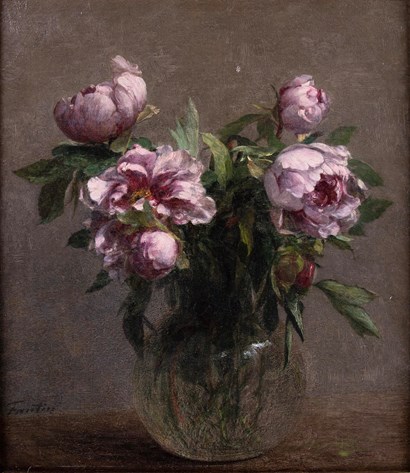
Douwes Fine Art b.v.
henri fantin-latour
Henri Fantin-Latour (Grenoble 1836-1904 Buré) Vase de Pivoines, 1902 Oil on canvas 41 x 37 cm Signed lower left 'Fantin' The authenticity of this work has been confirmed by Sylvie Brame Provenance: Tempelaere, Paris; Tavernier, Paris; Colnaghi, London; Galerie Brame, Paris, 1978; Sotheby's London, 1978, lot 205; private collection, Europe; Sotheby’s London, 1989, lot 2; private collection, Europe; Sotheby’s London, 1996, lot 24; Noortman Master Paintings, Maastricht, bought at TEFAF 2004; private collection, Belgium; Douwes Fine Art, Amsterdam Literature: Mme Fantin-Latour, Catalogue de l'oeuvre complet de Fantin-Latour, Paris, 1911, n° 1937, p. 206
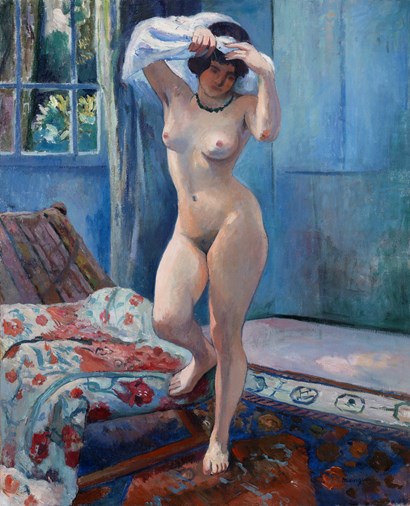
HELENE BAILLY MARCILHAC
Henri Manguin (Paris 1874-1949 Saint Tropez) La Chemise Enlevée, 1908 Oil on canvas 100 x 81 cm Signed lower right Provenance: acquired from the artist by Eugène Druet in 1911 (Galerie Druet); collection Kritchvesky; private collection, France; private collection, Brasil Exhibitions: Paris, Galerie E. Druet, Manguin, Paris 1913, n° 42; Paris, Galerie de Paris, Manguin, 1964, n° 3; Nice, Palais de la Méditerranée, Henri Manguin, plus de cent cinquante oeuvres, 1969, n° 32; Okayama, Hiroshima, Tokyo, Gustave Moreau et ses éleves, 1974; Paris, Galerie de Paris, Centenaire, Henri Manguin, 1976, n° 49 Literature: Pierre Cabanne, Henri Manguin, Neuchätel, 1964, ill. n° 117, p.64; Marie-Caroline Sainsaulieu, Lucille & Claude Manguin, Jean-Pierre Manguin, Pierre Cabanne, Jacques Lassaigne (preface); Henri Manguin: Catalogue Raisonné de l'oeuvre peint, Neuchâtel, Switzerland, Ides et Calendes, 1980, ill. n° 298
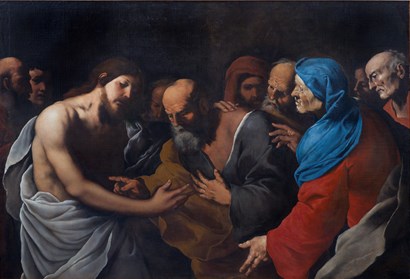
Hartford Fine Art - Lampronti Gallery
Francesco Fracanzano (Monopoli 1612-1656 Naples) The incredulity of Saint Thomas Oil on canvas 143 x 205 cm Literature: R. Causa, La pittura del Seicento a Napoli. Dal naturalismo al barocco, Naples, 1972, S. 976, n° 74; G. De Vito, Fracanziano’s periphrasis in XVII century Neapolitan studies, 2003/2004, pp. 104-105, fig. 2; N. Spinosa, XVII c. paintings in Naples, from Caravaggio to Massimo Stanzione, Naples 2010, p. 281 cat. n° 212; A. Della Ragione, Francesco Fracanzano, 2011, p. 10, fig. 23; N. Spinosa, Da Artemisia a Hackert. La collezione di un antiquario, exh. cat., Reggia di Caserta, Foligno 2019, cat. 9, pp. 18-19; N. Spinosa, Il Maestro degli Annunci ai pastori e i pittori del 'tremendo impasto' (Napoli 1625-1650), Rome 2021, cat. C5, p. 193 (quoting further literature: Cairo, 2011, pp. 203-210. Forgione, p. 233, fig. 12) Exhibition: Da Artemisia a Hackert. La collezione di un antiquario, Reggia di Caserta, 2019-2020

